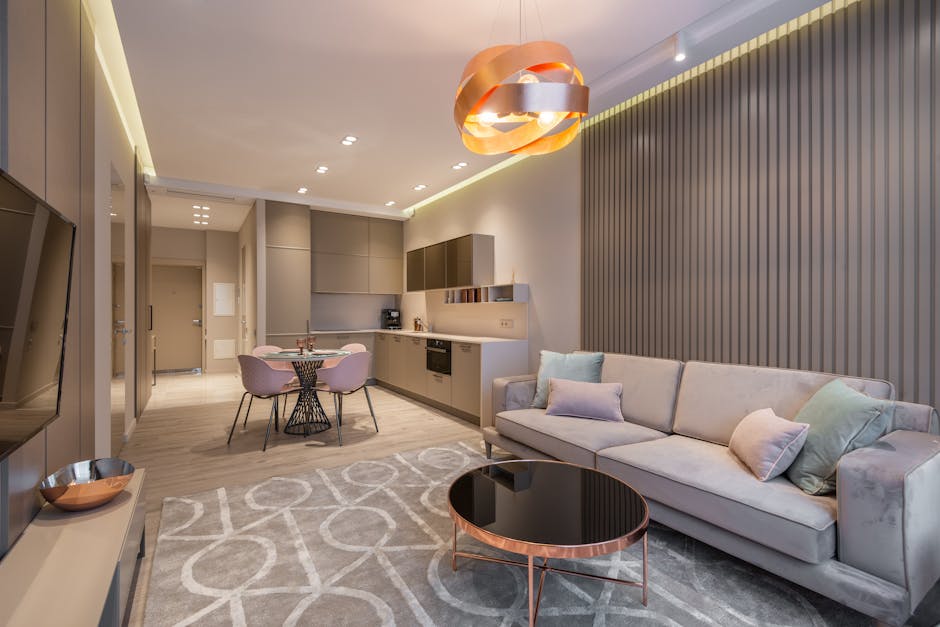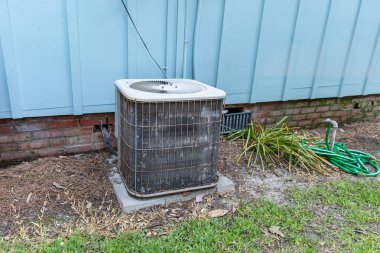Introduction to HVAC zoning: What is it?
HVAC zoning lets you control the temperature in different parts of your house independently. This means you can set one zone to be warm while making another cooler, all based on your preference or the specific needs of each room. This system involves multiple thermostats that connect to a central control panel, managing the airflow throughout your home. Essentially, HVAC zoning is a smart way to enhance comfort, reduce energy usage, and cut down on utility bills. It’s perfect for homes where certain areas tend to be too hot or too cold, or for families where everyone has a different idea of the perfect temperature. Think of it as giving you the power to tailor your environment, zone by zone.
The problem of uneven heating and cooling in homes
Ever found yourself in a situation where one room in your home feels like a sauna, while another is more like a walk-in fridge? It’s frustrating, and it’s a common issue. Uneven heating and cooling in homes happen for many reasons. Maybe your home has different levels, and heat prefers to hang out upstairs, or perhaps certain rooms are just too far from the HVAC system to get their fair share of air. Windows, insulation quality, and even the way your home faces can play a part. The bottom line is, not every room experiences the same comfort level, and that’s not cool (or warm, depending on where you’re standing). This problem isn’t just about comfort—it can be a real drag on your energy bill too. When you crank up the AC to cool down that one hot room, you’re also overcooling the rest of the house. Same goes for heating. It’s like pouring water on a sponge, hoping only one corner gets wet. It doesn’t work well, and it’s wasteful. This is where HVAC zoning comes into play, offering a smarter way to manage your home’s climate. Think of it as giving you the control to dial in the right temperature for each room, without the wastage. It’s about time we tackled those temperamental temperature zones in our homes, don’t you think?
How does HVAC zoning work?
HVAC zoning splits your home into different areas or zones, each controlled independently for heating and cooling. Think of it like having multiple light switches in your home, one for the kitchen, one for the living room, and so on. But instead of controlling light, you control the temperature in each zone. The system uses dampers in the ductwork to direct air where it’s needed based on each zone’s thermostat settings. You might have the living room set to be cozy and warm while keeping the bedroom cooler for a better night’s sleep. This means you can heat or cool just the areas being used, saving energy and making everyone more comfortable. Pretty smart, right?
Types of HVAC zoning systems
When we dive into the world of HVAC zoning, we bump into two main types: manual zoning and automatic zoning. Manual zoning uses dampers in the ductwork that you adjust by hand to control the flow of air to different parts of your home. It’s like channeling a river’s flow using gates. This type needs you to figure out where and when you want more heating or cooling. Then, there’s automatic zoning. This system is the sharp tool in the shed. It uses thermostats in each zone of your home. These thermostats talk to a central control panel that opens and closes dampers in the ductwork as needed. So, if your living room turns into a sauna while your bedroom feels like the arctic, the system adjusts airflow to balance the temperatures. Automatic zoning is smarter, adjusting itself without you having to lift a finger. Both systems aim to give you the power to heat or cool your home in sections, saving energy and making life more comfortable.
Benefits of implementing HVAC zoning in your home
HVAC zoning lets you control temperature in different parts of your home independently. This means you can keep your living room warm while making the bedroom cooler without affecting each area. Here’s why HVAC zoning rocks. First off, it slashes your energy bills. When you heat or cool only the spaces you’re using, you’re not wasting money on empty rooms. This approach can save you a good chunk of cash in the long run. Next, it boosts comfort. Everyone in your home can enjoy their perfect temperature without arguing over the thermostat. If you’re chilling in the kitchen and someone else is sweating in the study, HVAC zoning solves that problem. Plus, it prolongs your HVAC system’s life. By reducing the overall load on your system since it’s not working overtime to heat or cool the entire house, you prevent wear and tear. This means less maintenance and repairs, saving you even more money. HVAC zoning is a smart move for any home. It’s all about comfort, savings, and efficiency.
Determining if HVAC zoning is right for your home
Figuring out if HVAC zoning is smart for your place boils down to a few key points. First, notice if some rooms are too hot or too cold while others are just right. This is a telltale sign your home may benefit from zoning. Second, think about your house’s design. Large homes, multi-story homes, or places with unique layouts often need zoning to manage temperature effectively. Third, consider your family’s needs. If everyone has a different comfort level or if certain areas of your home are used more at different times, zoning can be a real game-changer. Lastly, think about your long-term goals. Yes, installing a zoning system comes with upfront costs. However, this setup can lead to energy savings down the line by heating or cooling only the areas you use the most. If these points strike a chord, zoning might just be the right move for your home.
Installation process: What to expect
When you decide to install an HVAC zoning system, you’re stepping towards more efficient heating and cooling of your home. This process kicks off with a professional review of your home’s layout. An expert will assess which areas need separate control. Here’s the rundown: First, they will design your zoning system based on your home’s specific needs. This means identifying the “zones” in your house that require individual temperature control. Next, comes the installation of dampers inside your ductwork. Think of dampers like valves that guide air where it’s needed. They open and close based on each zone’s temperature demands, managed by the system’s central control unit. After the dampers, the team sets up thermostats in each zone. These are crucial; they let you adjust temperatures in different parts of your house independently. Finally, everything gets connected to the main control panel, which becomes your command center for managing the comfort levels across your home. Expect some noise and a bit of disruption during installation, but it’s all part of the path to a more comfortable living space. It’s hands-off for you, just let the professionals do their magic. Once installed, you’ll wonder how you lived without it—total control over your home’s climate at your fingertips.
Cost considerations and potential savings
Setting up an HVAC zoning system might sound like a big investment, but it can actually save you money in the long run. Initially, you might spend (2,000 to )3,000 for a new zoning system installation. Factors such as the size of your home, the type of system you need, and the complexity of installation play a part in the overall cost. Yes, it’s a chunk of change, but here’s where the savings come into play. With zoning, you only heat or cool areas in use, significantly cutting down your energy bills. Many homeowners see a reduction in their energy costs by as much as 20% to 30%. Also, zoning prevents overworking your HVAC unit, meaning fewer repairs and a longer life for your system. So, while the upfront cost may pinch, the long-term savings and increased comfort in your home make it worth considering.
Maintenance tips for your HVAC zoning system
Taking care of your HVAC zoning system isn’t tough, but it demands regular attention to keep everything running smoothly. First off, change your air filters every few months. This simple act can prevent a lot of issues down the line by keeping air flow steady and clean. Next, keep an eye on your thermostats. If they’re not reading the right temperature or responding correctly, they might need a check-up or replacement. Don’t forget about the dampers in your ducts either. These should be inspected at least once a year to ensure they are moving freely and haven’t jammed. Also, clean your ducts every few years. This helps maintain air quality and efficiency in your system. Avoid blocking vents with furniture or curtains, as this can mess with the system’s balance, making some rooms too hot or too cold. Lastly, schedule an HVAC professional to service your system annually. They can catch problems you might miss and help keep your system efficient. Stick with these tips, and your HVAC zoning system will thank you with years of comfortable, even heating and cooling.
Conclusion: Is HVAC zoning the solution for you?
Deciding if HVAC zoning is right for your home boils down to a couple of key points. Do you experience uneven temperatures across different rooms? Are your energy bills through the roof because your system works overtime trying to keep up? If you nodded yes to these, then zoning might just be the ticket. By allowing you to control the temperature in individual areas, HVAC zoning brings down your energy use and saves money on bills. Plus, everyone gets to enjoy their own comfort zone without fights over the thermostat. Remember, the initial cost may be a bit up there, but the long-term savings and comfort could very well make it worth your while. So, weigh these factors and consider consulting a professional. Ultimately, if peace at home and saving dough sound good to you, HVAC zoning could be a smart move.











